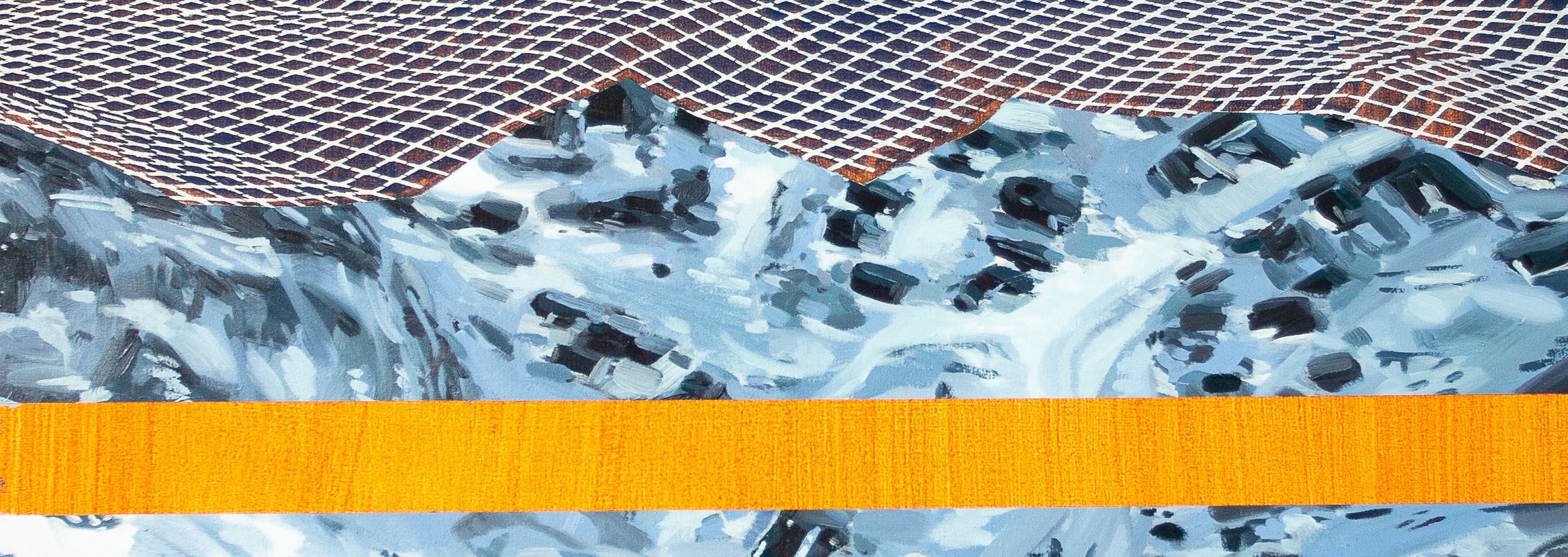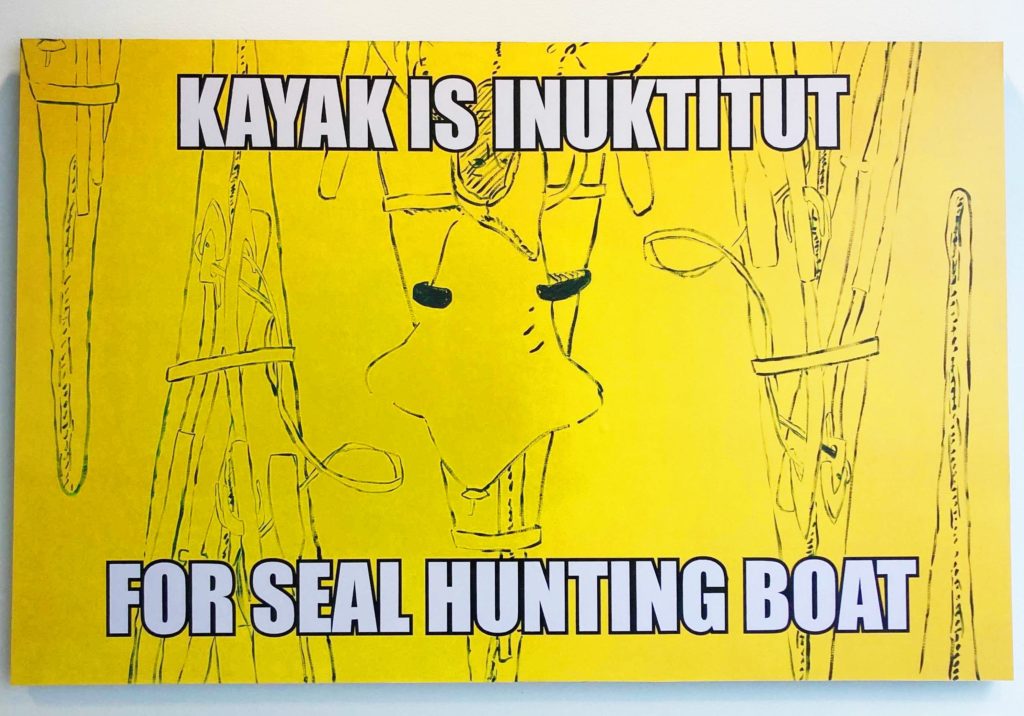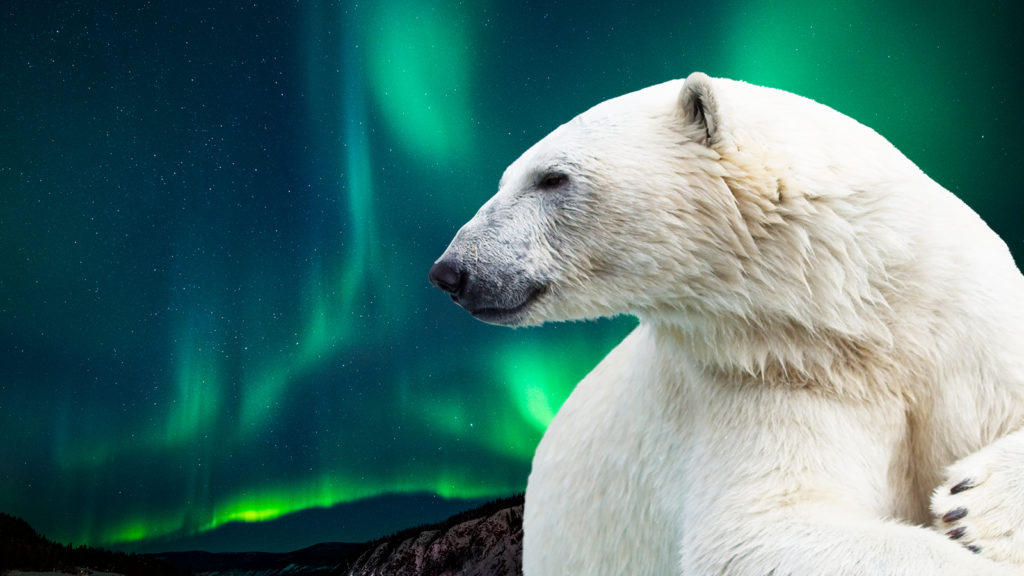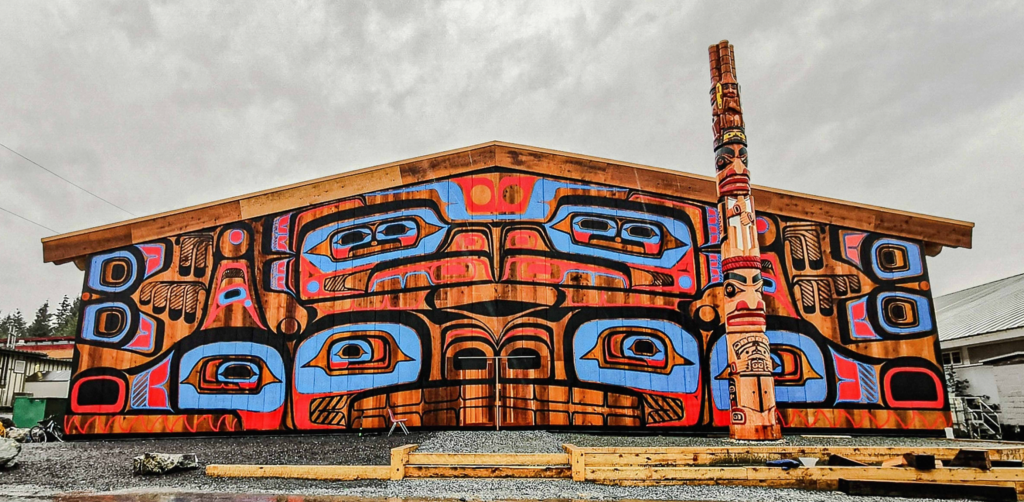Mark Igloliorte has created art for as long as he can remember. When an art teacher taught his elementary class drawing exercises using the well-known book “Drawing on the Right Side of the Brain,” it stuck with Mark. To him, there was no hierarchy in the classroom that day—the teacher was a learner along with them. It is a teaching technique he uses now as a professor at Emily Carr University of Art & Design.
“I like the idea that we’re all learners,” he says. “We're always learning.”
As an interdisciplinary artist of Inuit ancestry, he uses his art to explore language and identity and connect to his Inuit heritage. With works like “Kayak Is Inuktitut for Seal Hunting Boat” and “Seal Skin Neck Pillow,” his current exhibition, Traverse, examines the colonization of objects and language, and the importance of reconnecting to language, tradition, and culture.
Traverse is on display in our Aurizon Atrium until September 1 as part of Arctic Visions, an artistic extension of our current feature exhibition, Arctic Voices, presented by RBC.
As part of Traverse, you created 3 paintings that feature digitally altered satellite imagery with Inuktitut phrases. What was the inspiration behind these paintings?
I was back in Hopedale, Nunatsiavut where my family is from, and one of the things that I found interesting was the amount of Inuktitut I was hearing while out hunting with my uncle and his friend. There were specific words for everything, from the type of hunting being done to all the different animals. My father went to residential school, so I never really heard him speak Inuktitut although that was all he spoke until he was school-aged. I never heard him speak Inuktitut because of the way that the residential school experience affected him. To go from not hearing a part of your ancestry, a part of your culture, to starting to hear it in a context where it’s comfortable was just a really significant experience for me.
I’m on my own journey of learning Inuktitut and most recently, I've been working on spray painting skateboards with stencils of Inuktitut words. It's been a lot of fun. There’s this word that I came across—Anittâ. It means “above all negations.” I feel like when you're learning something new, there are so many ways that you or someone else can try to negate the process, and to think that there's a word in my language that covers all of that, a word that says above all negations. A word that says you cannot negate it. I just love that.




